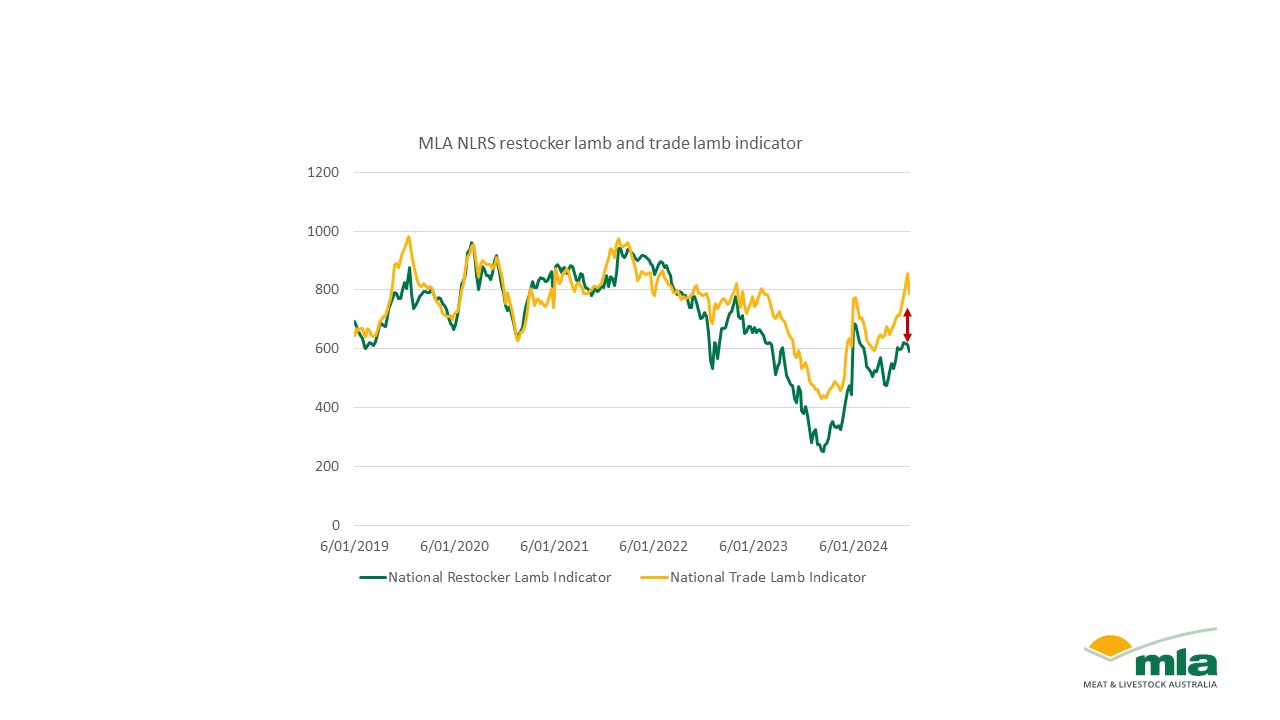Key points:
- Since May, sheep and lamb prices have returned to seasonal trends.
- Trade lambs are fetching 242¢/kg carcase weight (cwt) above restockers, the second largest gap on record.
- We are expecting a slow start to this season's young lamb push.
The sheep market follows a strong seasonal trend. Traditionally, prices start low at the break of the year, then lift moving into autumn, peaking at the tail end of winter with the constriction in finished lamb supply, and then ease off with the reintroduction of new-season lambs. Lamb prices in 2024, however, have been moving in unpredictable and unprecedented ways. This an extension of a volatile two years of trade.
Starting strong in the initial sales of the year, prices lifted to near yearlong highs. However, following the excitement of a wet summer and decent supply, prices eased for the first three to four months of the year. This due to high supply and drying paddocks across Victoria and SA affected confidence levels of producers in the future of the market. Since May, prices have returned to mimic more seasonal trends. A lift of 30% over the last four months has returned confidence, undoubtedly significantly impacting producer sentiment.
Despite strong returns across processor lambs in the Trade and Heavy Lamb Indicators, Restocker Indicators have not felt the same relief, lifting by 25% when compared to 33% in the Trade Lamb Indicator and a solid 38% lift for the Mutton Indicator.

Compared to the swift recovery of heavier lamb prices, which may continue if finished animals are rewarded, restocker prices have not kept up. Price disparities from last week's highs saw the trade lamb pricing premium over restockers. This is the second highest nominal price on record as trade lambs were receiving 242¢/kg carcase weight (cwt). The previous highest price was in August 2018 at 250¢/kg cwt. The proportion premium of 33% is well above the five-year average of 10%.
This pushes current market conditions back into unprecedented territory. Looking shorter term, last week (week ending 21 July) MLA reported lifting heavy lamb prices to levels not seen since 2021 and . The green shoots didn't last with this week with sheep yardings lifting, lamb yardings easing, and all indicators falling by 50–89¢. After the highs of last week, rainfall across hard-hit sheep country, and a reduction in enthusiasm from export buyers, the market has recorrected and fallen across the board.
Seeking some positive shoots, markets are awaiting the arrival of new-season lambs. Historically new season lambs, starting through NSW saleyards, tend to enter the market in late July. Just 500 young lambs were sold through Forbes saleyard this week, fetching over 930 ¢/kg cwt. This indicated a slow start to this season's young lamb push, though it provides confidence that the premiums are there for when they enter the market.
Attribute to: Erin Lukey, MLA Senior Market Information Analyst






